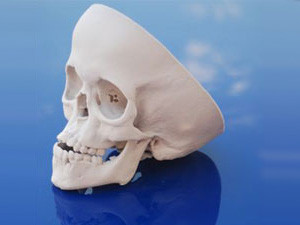
Worldwide shipments of 3D printers (3DPs), priced less than $100 000, will grow 49% in 2013 to reach a total of 56 507 units, according to a Gartner forecast.
During Gartner's recent symposium in Cape Town, 3D printing was identified as one of the top 10 tech trends predicted for 2014.
According to the latest Gartner report, rapid quality and performance innovations across all 3DP technologies will drive enterprise and consumer demand. Gartner says shipments will increase further in 2014, growing 75% to 98 065 units, followed by a near doubling of unit shipments in 2015.
"The 3D printer market has reached its inflection point," says Pete Basiliere, research director at Gartner. "While still a nascent market, with hype outpacing the technical realities, the speed of development and rise in buyer interest are pressing hardware, software and service providers to offer easier-to-use tools and materials that produce consistently high-quality results."
In 2013, combined end-user spending on 3DPs will reach $412 million, up 43% from spending of $288 million in 2012. Enterprise spending will total more than $325 million in 2013, while the consumer segment will reach nearly $87 million. In 2014, spending will increase 62%, reaching $669 million, with enterprise spending of $536 million and consumer spending of $133 million.
"As the products rapidly mature, organisations will increasingly exploit 3D printing's potential in their laboratory, product development and manufacturing operations," says Basiliere. "In the next 18 months, we foresee consumers moving from being curious about the technology to finding reasons to justify purchases as price points, applications and functionality become more attractive."
High industry impact
From an enterprise point of view, current uses of 3D technology focus on once-off or small-run models for product design and industrial prototyping, jigs and fixtures used in manufacturing processes and mass customisation of finished goods. As advances in 3D printers, scanners, design tools and materials reduce the cost and complexity of creating 3D printed items, the applications of 3D print technology will continue to expand to include areas such as architecture, defence, medical products and jewellery design.
Gartner predicts 3D printing will have a high impact on industries, including consumer products, industrial and manufacturing; a medium impact on construction, education, energy, government, medical products, military, retail, telecommunications, transportation and utilities; and a low impact on banking, financial services and insurance.
The report forecasts that 3D printer prices will decrease during the next several years due to competitive pressures and higher shipment volumes, even after allowing for providers who will be offering devices with higher performance, functionality and quality that enable them to hold the line on pricing.
Share